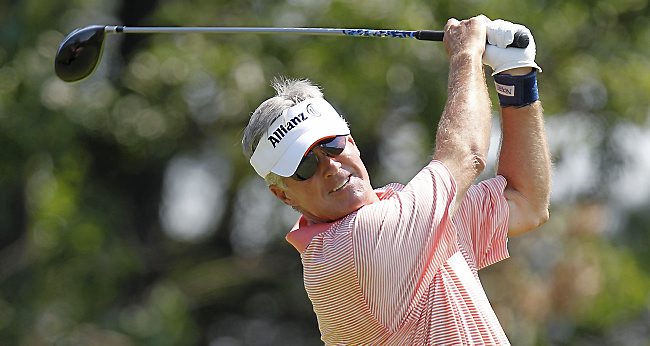By MAE ANDERSON and MATT SEDENSKY
NEW YORK (AP) — Two ABC affiliate owners spoke out against late night talk show host Jimmy Kimmel ahead of ABC’s decision to suspend the presenter over comments he made about the killing of conservative activist Charlie Kirk. Their comments highlight the influence local TV station owners have on national broadcasters such as Disney-owned ABC.
Related Articles
Ukrainian refugees in US face precarious future after losing legal right to work
White House scraps water expert’s nomination as states hash out Colorado River plan
Trump suggests US troops could return to base in Afghanistan, citing its proximity to rival China
Pete Buttigieg rallies against redistricting in home state of Indiana
Trump administration to close Miami organ donation group it calls ‘failing’
Here are key facts about the two companies.
Nexstar Media Group
Nexstar Media Group, based in Irving, Texas, operates 28 ABC affiliates. It said it would pull Kimmel’s show starting Wednesday. Kimmel’s comments about Kirk’s death were “offensive and insensitive at a critical time in our national political discourse,” said Andrew Alford, president of Nexstar’s broadcasting division.
The company owns or partners with more than 200 stations in 116 U.S. markets, and owns broadcast networks the CW and NewsNation, as well as the political website The Hill and nearly a third of the Food Network.
It hopes to get even bigger. Last month, it announced a $6.2 billion deal to buy TEGNA Inc., which owns 64 other TV stations.
FILE- In this Oc. 29, 2014, file photo honoree Perry Sook, Chairman, President and CEO of Nexstar Broadcasting Group, attends the 24th Annual Broadcasting and Cable Hall of Fame Awards at the Waldorf-Astoria in New York. Nexstar is offering to buy Chicago’s Tribune Media for about $4 billion, four months after the collapse of a similar bid from Sinclair Broadcast Group. The offer Monday, Dec. 3, 2018, would make Nexstar, whose stations reach nearly 39 percent of all U.S. television households, the biggest operator of local TV stations in the U.S. (Photo by Evan Agostini/Invision/AP, File)
The deal would require the Federal Communications Commission to change rules limiting the number of stations a single company can own. The FCC’s chair, Brendan Carr, has expressed openness to changing the rule.
Sinclair Broadcast Group
Sinclair Broadcast Group, based in Hunt Valley, Maryland, operates 38 local ABC affiliates. On Wednesday the company, which has a reputation for a conservative viewpoint in its broadcasts, called on Kimmel to apologize to Kirk’s family and make a “meaningful personal donation” to the activist’s political organization, Turning Point USA. Sinclair said its ABC stations will air a tribute to Kirk on Friday in Kimmel’s time slot.
Sinclair owns, operates or provides services to 178 TV stations in 81 markets affiliated with all major broadcast networks and owns Tennis Channel.
Controversies
Sinclair made headlines in 2018 when a video that stitched together dozens of news anchors for Sinclair-owned local stations reading identical statements decrying “the troubling trend of irresponsible, one-sided news stories plaguing the country” went viral. Sinclair didn’t disclose that it ordered the anchors to read the statement.
Nexstar operates similarly.
Danilo Yanich, professor of public policy at the University of Delaware, said the company is the “biggest duplicator” of news content today His research showed Nexstar stations duplicated broadcasts more than other affiliate owners.
Affiliate influence
Lauren Herold, an editor of the forthcoming book “Local TV,” said the web of companies involved in getting Americans their television shows is “relatively unknown” to most viewers, though their influence has been made known for decades.
Often, Herold said, that’s been when local affiliates have balked at airing something they viewed as controversial, such as the episode of the 1990s comedy “Ellen” in which Ellen DeGeneres’ character came out as gay.
“It’s not a complete oddity,” Herold said. “I think what’s more alarming about this particular incident to me is the top-down nature of it.”
Whereas past flare-ups between affiliates and their parent networks have often involved individual local TV executives, Herold pointed to the powerful voices at play in Kimmel’s suspension: Disney CEO Bob Iger, the FCC’s chair Carr, as well as Sinclair and Nexstar.
“The FCC kind of pinpointing particular programs to cancel is concerning to people who advocate for television to be a forum for free discussion and debate,” Herold said.
Jasmine Bloemhof, a media strategist who has worked with local stations, including ones owned by Sinclair and Nexstar, said consolidation has given such companies “enormous influence.” Controversies like the latest involving Kimmel, she said, “reveal the tension between Hollywood-driven programming and the values of everyday Americans.”
“Networks may push one agenda, but affiliates owned by companies like Sinclair and Nexstar understand they serve conservative-leaning communities across the country,” Bloemhof said. “And that friction is bound to surface.”




